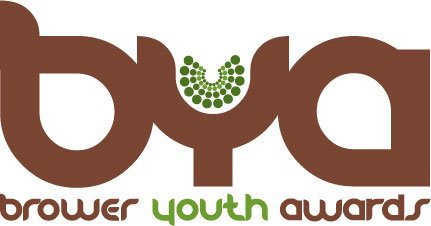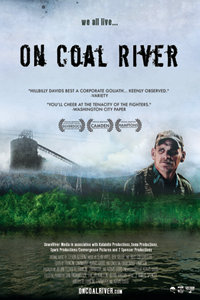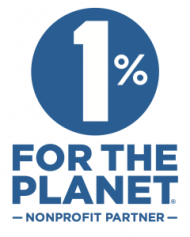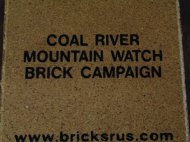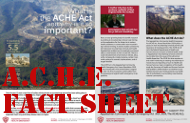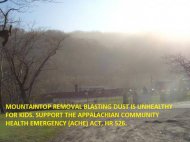
Want To Know More About The Charleston Chemical Spill?
Jan 23, 2014

Written by CRMW volunteer Emily Sanders.
On January 9th, 2014, nearly 300,000 citizens in the energy sacrifice zone that is Southern West Virginia were affected by a toxic chemical leak into their water supply. Although inhabitants of Central Appalachian communities are far from unfamiliar with having their water contaminated by the coal mining industry, this particular incident meant residents were prohibited from using water for the purposes of bathing, drinking, brushing teeth, cooking, even laundering their clothing--the only use of the water deemed safe for the residents was for flushing their toilets.
On Thursday morning at 8:30 A.M., the Department of Environmental Protection began to receive complaints from citizens that a pungent smell of licorice was in the air. This odor, unbeknownst to residents at the time, was emanating from a leak of the chemical compound 4-methylcyclohexanemethanol, or MCHM. This chemical was being stored for the purposes of washing coal before combustion by Freedom Industries, the company responsible for the spill. According to Freedom Industries president Gary Southern, employees did not notice the leak of MCHM until 10:30 A.M. on Thursday. At this time, inspectors from the DEP arrived at the site to witness the leak, along with an absence of cleanup or containment measures being taken by employees of Freedom Industries.
Up to 7,500 gallons of MCHM were reported to have leaked from the tank, most likely from holes in the retaining wall, as the container was part of former Pennzoil refinery dating back to the 1930s or 1940s. This 35,000-gallon storage tank rests along the Elk River, a tributary of the Kanawha River. The spill, which occurred only a mile upstream from West Virginia American Water’s intake, treatment, and distribution center, contaminated the water supply of nine West Virginia counties: Boone, Cabell, Clay, Jackson, Kanawha, Lincoln, Logan, Putnam, and Roane.
Both Kanawha, commonly referred to as “Chemical Valley”, and Freedom Industries, the company responsible for the water contamination and for providing chemicals to the mining industry, have a history of chemical processing and frequent incidents of pollution. This was the third chemical accident to occur in the Kanawha River Valley within the past five years.
At the time of the spill, there was no inspection program in place for Freedom Industries’ tanks, nor were environmental permits enforced concerning the chemicals contained at the facility.
Information on the leak was patchy from the start, and slow to come out on all fronts—but especially from the company responsible for the contamination. Freedom Industries did not notify West Virginia American Water, who supplies over 580,000 residents with water, of the spill. Instead, it was reported to them by the DEP after residents had called in with complaints. Though West Virginia American Water had become aware of the situation by noon on Thursday, the company assumed the chemical could be filtered out of the water. However, by 4 PM, the carbon filtration system could no longer contain the amount of impurities in the water, allowing MCHM to flow through the filter.
“We don’t know that the water is not safe, but I can’t say it is safe,” was the most president of West Virginia American Water, Jeff McIntyre, could say about the incident. “Once it’s in there, there’s no more treatment for it.”
At this point on January 9th, West Virginia Governor Earl Ray Tomblin declared a state of emergency, which led to President Barack Obama’s declaration of a Federal state of emergency. The Federal Emergency Management Agency was then sent in to provide assistance and over 2 million liters of water to West Virginia residents.
The sporadic and vague dispersal of information on the spill and how long the contamination would last, however, compounded the general anxiety amongst residents about the unusable tap water. The insufficient response by Freedom Industries created even further confusion. The public was not notified until 5:45 P.M. on January 9th that they should not use of their tap water due to the toxin—many had used their water after it was contaminated but before this alert came out, and others were originally under the false impression that, like many of the other instances when their water was poisoned, they could use the tap as long as they boiled it first.
The local 911 center reported that within four or five hours after residents became aware of the spill, over 1,000 calls were placed reporting possible symptoms and health concerns, 24 of which required emergency medical services. The Charleston Area Medical Center began refusing everyone but emergency patients.
One man planned to sue Freedom Industries after his kidney transplant was canceled due to the water emergency, leaving him forced to endure continual dialysis and pain.
Due to a lack of foresight and research on the chemical MCHM by its distributors and by Freedom Industries, the direct health effects on the public from the contamination were just as unpredictable as the tangential effects on other patients in the now overcrowded hospitals. Prior to the chemical spill, there was essentially no known information on the human or wildlife health impacts of MCHM. Though the company that produces the chemical, Eastern Chemical Company, is required by law to complete a safety data sheet on the chemical detailing possible health effects, the sheet was found incomplete.
The visible and reported symptoms at this time include vomiting, diarrhea, reddened and burning skin and eyes, headaches, itching and rashes.
The emergency also highlights the insufficiency of the Toxic Substances Control Act, a law passed in 1976 that needs to be drastically revised and updated in order to help prevent such events from passing under legal radar in the future.
In reaction to the crisis, citizens and volunteers mobilized to aid each other and distribute clean water. Water stations began to arise in malls, churches, high schools, recreation centers, and fire departments. For the week following the announcement of the water crisis, volunteers from Coal River Mountain Watch set up at churches and community centers with jugs of clean water, sanitation products, baby wipes, paper plates and utensils, as well as homemade hot food and coffee for those unable to use water for cooking. Volunteers also drove door to door in affected counties, handing out clean water to families in need.
On January 13th, though it was not made clear by Governor Tomblin or the responsible industries whether the water was safe at this point, state officials gradually lifted the ban based upon “priority zones.” Charleston area residents were advised to flush water from their pipes.
Since the incident, a Kanawha County Circuit Court judge granted a temporary restraining order to Freedom Industries in order to preserve evidence of the spill. The leak has also caught the attention of U.S. Attorney Booth Goodwin, who told CNN on January 10th “even a negligent release of this kind could be a criminal violation.”
On a local level, West Virginia residents themselves are taking this opportunity to call for greater regulation on the mining industry and related chemical industries. A candlelit vigil administered by various anti-mountaintop removal organizations in the Coal River Valley occurred at the capitol on January 21st. Along with rallies in solidarity, such as the one hosted at the volunteer house of Coal River Mountain Watch the same day, this vigil served the purpose of asserting that clean water is a basic necessity of life, and the right to have it available to the public at all times should be preserved and respected.


